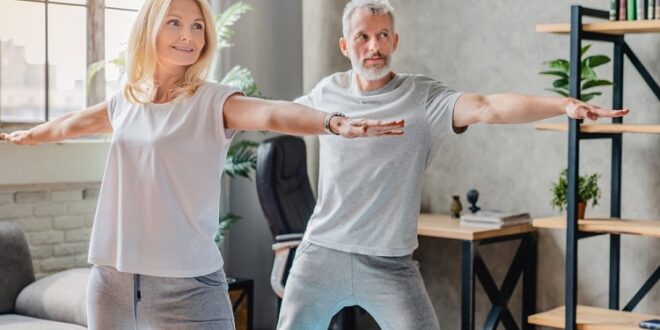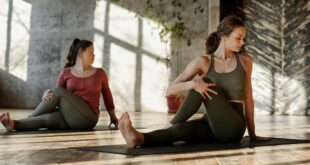Growing old and earning the symbol of wisdom – gray hairs – is undoubtedly a milestone. Along with its perks is a decline in mobility, strength, and health, leading to physical, psychological, and social changes in older people.
The good news is that there are many exercises to restore or prevent immobility in older adults, who may be struggling to move as they used to.
Are you looking for a suitable home for your older loved one with immobility concerns? Season Retirement organizes daily classes to engage residents in easy stretching exercises to keep their bodies in great shape.
This guide presents the different mobility exercises for older adults to enhance their strength, flexibility, and mobility.
How Does Limited Mobility Affect Older Adults?
Physical inactivity and limited mobility over some time may expose older people to unsteadiness and falls. One of the alarming major health concerns for older people is falling. Over a million older adults are hospitalized each year due to falls worldwide.
During the COVID pandemic, there was a case study where people were restricted from outdoor activities.
Due to sitting for long hours, many older adults lost their abilities, became stiff or weaker, experienced imbalance, hips pain, and decreased flexibility. Eventually, when they started going out, they got tired quickly.
When you’re flexible, your mobility is intact. Flexibility is the ability of the body muscles and tendons to lengthen and stretch in response to movement and allow a joint to move through its range of motion.
Why Is Mobility Significant for Older Adults?
Independence is the spice that spikes up your self-esteem and confidence as a person. When you can pull through the day, do your chores, and solve your puzzles on your own, you feel great.
The big factor that helps you achieve all you want is your mobility. For older adults to enjoy an independent retirement, especially because of their health decline, it becomes essential to maintain and preserve their mobility and flexibility.
And there’s no better way to achieve this than through mobility exercises for the elderly.
How To Start Moving Again
There are several options on how to improve the range of motion in older adults, among which are physical therapy and exercises.
Seasons Retirement has in-house healthcare workers who provide a safe environment for their residents to receive their care and attention.
How Much Exercise Do Older Adults Need?
Older people aged 65 and above should target 150 minutes of moderate aerobic activity each week. It’d be best to include endurance and muscle-strengthening activities at least two days a week.
If, however, your loved one cannot meet up with 150 minutes of moderate aerobic activity each week due to a health condition, they can start slowly – say five minutes of exercise a few times each day and gradually increase the workload.
Exercises For Older Adults
There are four general types of senior mobility exercises to boost the physical health of older people. These include:
1. Balance
Specific exercises to maintain and improve balance are standing on a foot, tai chi, heel-to-toe walks, etc. Also, lower-body strengthening exercises can promote balance and help prevent falls.
2. Strength
Exercises such as strength training, weightlifting, catching a tennis ball, lifting groceries focus on strengthening your muscles.
3. Flexibility
Stretching activities help maintain flexibility as it gives way to bend down easily. Flexibility exercises include yoga and stretches for the neck, hips, arms, legs, and back.
4. Endurance
Activities such as climbing the stairs, running, jogging, dancing, walking, and swimming boost your breathing and heart rate to carry out daily tasks. In other words, these activities keep the heart pumping.
Here are a few senior mobility exercises to maintain your loved one’s mobility.
Six Senior Mobility Exercises
1. Wall push-ups
This exercise aims to strengthen the upper body, such as the arm and shoulder.
Stand two to three feet away from the wall, stretch your arms to your front and place your palm shoulder-width flat on the wall. Ensure that your back is straight, bend at the elbows, and lower your body toward the wall.
Push back out to the starting position before your nose brushes the wall. Start with five and work your way up to ten or more as you get greater balance.
2. Single-leg stands
Another way to improve balance is to build strength in the thigh through practicing single-leg stands.
Hold a chair to maintain stability. Stand on one leg with the knee slightly bent. Remain in this position for some minutes. You can take your hands off the chair once you gain balance.
3. Chair squats
One way to gain strength on your legs is to squat. The more you squat, the more power is built on your leg muscles. For older adults who cannot squat, here’s a modification.
Keep your back straight and sit on the edge of a chair with your feet shoulder-width apart. Place your knees at a 90-degree angle. Maintain this position while you slowly stand up.
Next, slowly sit down. Continue this stand-up-sit-down routine for a while. You may use an armchair for stability.
4. Bridge
Many older adults feel lower back pain. One effective way to tackle it is through the bridge exercise.
It’s easy to practice. Lie down on your back with your hands by your side and your feet firmly planted on the ground about 10 inches from your buttocks.
Push your pelvis into the air as high as possible and hold for 30 seconds. You can repeat three to four times.
5. Stretch for flexibility
The more you stretch, the more pliant you become for your daily chores and the higher your fitness level and confidence.
It’s best to stretch if you feel cramped or when your muscles have warmed up after strength or endurance exercises.
Do you have trouble sleeping? Stretching before going to bed can improve your quality of sleep. The proper amount of stretches for the neck, hips, arms, back, and ankles will improve flexibility as the years go by.
Thus, incorporate a stretching program into your daily exercise routine to help flex and loosen your muscles.
6. Walk for endurance
You can take a walk or stroll around if other endurance activities are too strenuous. Choose a safe option and walk around. It could be through a driveway or around your house or if you feel a little adventurous, take a walk to the park as long as there’s no risk of fall.
If you have trouble standing, don’t worry, you can still benefit from marching on a spot or, better still, doing a seated march.
Conclusion
With these senior mobility exercises, you can now loosen those stiff muscles, become more flexible, and be generally healthful.
The point is to find what resonates and works for you and stick to it as your physical health depends on it.
However, older adults may require different levels of care due to their needs. If your loved one needs quality care and attention, Seasons Retirement is a good home for them.
 HammBurg Be informed with latest news, reviews, entertainment, lifestyle tips, and much more.
HammBurg Be informed with latest news, reviews, entertainment, lifestyle tips, and much more.




